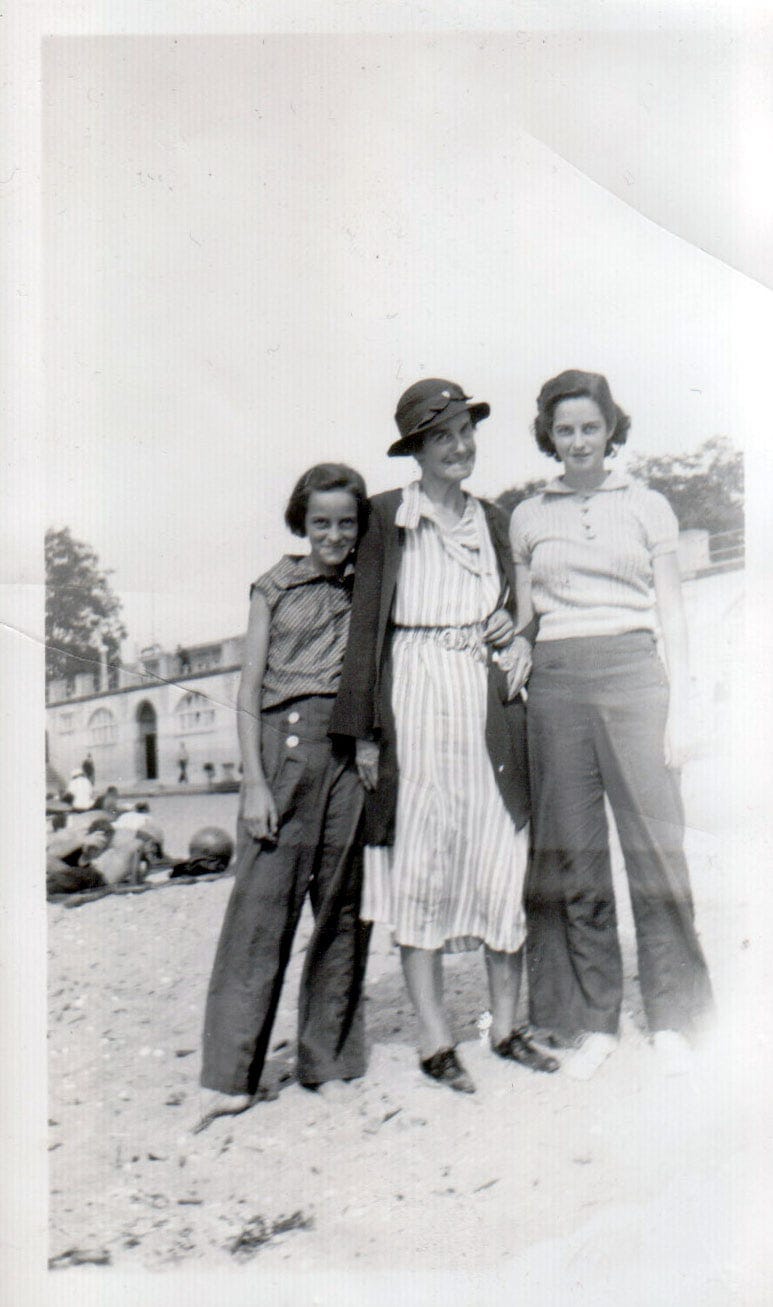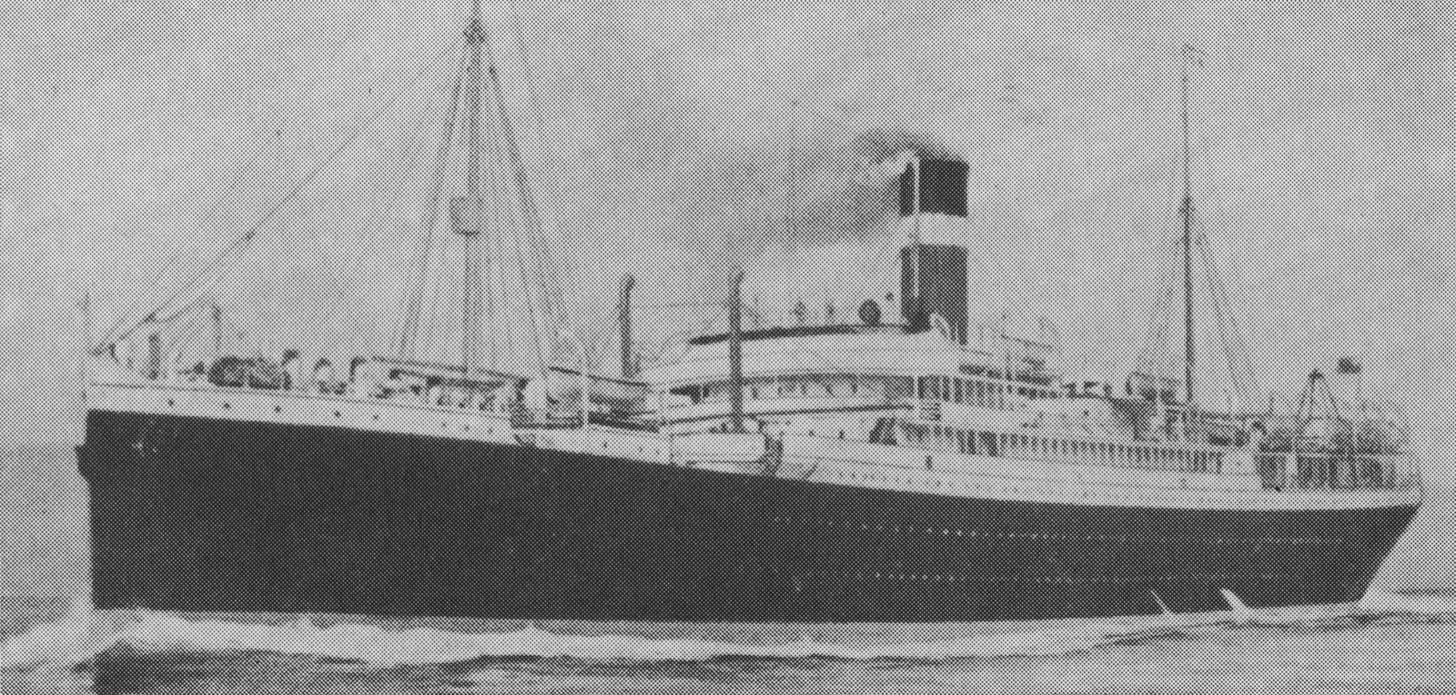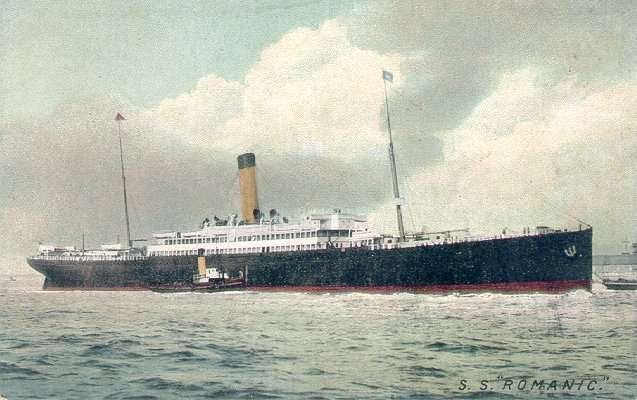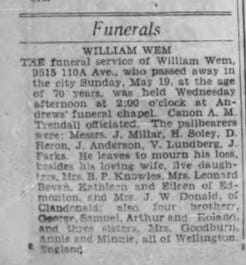In honour of the 100-year anniversary of my grandmother Eileen’s birth (on April 26) and the very recent passing of her beloved sister, Kay (at the astonishing age of 103!), I thought I’d do a series of posts on these women and their family. This family experienced its share of adventures as well as tragedies, but for me it is beautifully framed by the many wonderful memories I cherish of my Grandma, who passed away nearly 15 years ago.

In April 1905 in the tiny village of Wem, William Wem and Frances Annie Lloyd (the daughter of a shoemaker) were married. William was 34 at the time and Frances was 21. Ultimately, they had 5 daughters — Evelyn Margaret, Frances May, Florence Isabel, Winnifred Kathleen, and Eileen Elizabeth — and a son, William Jr., who died when he was only a few months old.
Their first four children were born in Shropshire in England, near the border with Wales. For at least part of that time, the Wem family are listed as living at Heath Farm in Hadnell, Shrewsbury, where William was a farmer and a butcher, having been apprenticed into that vocation by his grandfather, Samuel Bayley, with whom he lived from a young age. (William’s father, a warehouse manager also named William, does not appear to have been as well off as his father-in-law, who is listed as farming 60 acres).
It isn’t clear from the records available to me what prompted the family’s move to Canada. As late as the 1911 British Census, the family is still living at Heath Farm. On April 3, 1913, William, his wife, and their three girls arrive in Halifax aboard a ship called the Hesperian, bound for Radisson, Saskatchewan (which incidentally only became incorporated as a town in July 1913).

At some point, though, their plans change and, by at least 1915, the Wems have set up in Edmonton, Alberta. We know that they are living in Edmonton by this point, because we know that a major event that occurs in Edmonton in 1915 has a major impact upon the Wem family.
On June 29th of that year, the North Saskatchewan River floods. The river rose so high that city officials were worried the waters would sweep away the fairly new Low-Level Bridge (visible in the photo below). Over 2000 people lost their homes in the event. My great-grandfather and his family were among these.

July 1, 1915, two days later, William had signed up for active service in World War I as a private in the 66th Battalion (which had opened a recruiting office in Edmonton the day of the flood). The address of his next of kin on his military attestation papers is listed as: “Shack, River Bank, Strathcona, Edmonton.” (Strathcona was on the south side of the river). He was 44 years of age. This was not the only time he had been a member of the military, having been a member of the Imperial Yeomanry during the Second Boer War. He fought throughout the war and was discharged in July 1919.1

There are records that show the family going back to England in the summer of 1916 (aboard the Scandinavian). Another record shows them returning to Canada in January 1919 (also aboard the Scandinavian). As I describe below, the Wem family stay in England during this entire three-year period.

Among William’s military papers is a form for Frances, listing the address where William’s pay of $20/month should be sent. (This amount appears to have increased later in the war). Although “Edmonton, Alta.” shows on the payment form for May 1916, this has been crossed off and replaced with: 16 High Street, Brierley Hill, Staffordshire, England. This remains her address until January 1919, at which point someone has written on the form: “Trans[ferred] to Can[ada]”. This corresponds with the time that Frances returns to Canada with the children. Notably, Brierley Hill is the village in England where Frances’s mother, Ann Lloyd (née Randle), was born, so it appears that Frances is staying with her family during the war years.

William was discharged in July 10, 1919. The home he is listed as returning to is: 10164-83 Avenue, South Edmonton.2 That location does not appear to exist anymore. By 1921, the Wem family, which now includes baby Kay, is listed as living at 10628-91 Avenue, which cannot have been very far from their original shack. William is now listed as working as a janitor, having left his butcher days behind him. 10 years later in the 1931 census, he is still a janitor, working at a school. By this point, though, the family has moved to higher ground (10721-103 Street), on the north side of the river.
By the time William passes away in 1940 at the age of 70, they have moved again, this time to 9515-110a Avenue.

- I plan to do a deeper dive into William Wem’s time in WWI. I have been told by family that the experience was harrowing and led to him needing to change his vocation upon his return to Canada. Previously, he had been a butcher. At his time of discharge, he is listed as having served as a member of the Canadian Armed Services Corp (CASC) in France. The CASC transported supplies to troops and helped to repair vehicles. There is more information on the 66th Battalion in this 2015 article from the Loyal Edmonton Regiment Military Museum newsletter. ↩︎
- I plan to do a deeper dive into William Wem’s time in WWI. I have been told by family that the experience was harrowing and led to him needing to change his vocation upon his return to Canada. Previously, he had been a butcher. At his time of discharge, he is listed as having served as a member of the Canadian Armed Services Corp (CASC) in France. The CASC transported supplies to troops and helped to repair vehicles. There is more information on the 66th Battalion in this 2015 article from the Loyal Edmonton Regiment Military Museum newsletter. ↩︎